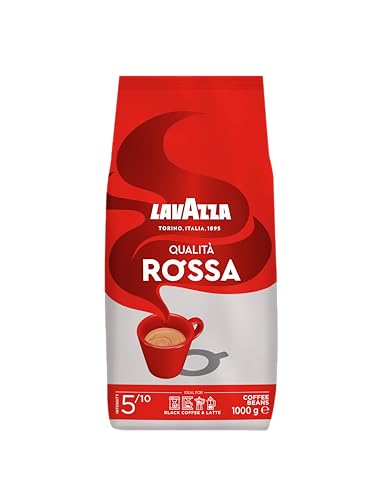Starbucks Coffee Beans 1kg
Starbucks was a cozy café situated in Seattle, Washington before it was famous for its Peppermint Mochas and red holiday cups. The company's founders were focused on selling whole bean coffee but they weren't aware of the potential of espresso drinks.
This changed when Schultz stepped in. He was determined to show off his roasting and mixing skills.
Origin
Starbucks coffee beans have an extended, winding trip before they reach your cup. Coffee is grown almost exclusively in the Coffee Belt. This area is located all over the world between the Tropics Cancer and Capricorn. The climate, soil, and the culture of each region influence the taste of the beans. Starbucks sources its coffee from more than 30 countries around the world.
The majority of Starbucks coffees come from three regions: Latin America, Africa and Asia-Pacific. These regions are renowned for their full-bodied flavor, balance of acidity and weight. Starbucks also sources some of its coffee from the island of St. Helena, a volcanic tropical paradise in the South Atlantic Ocean.
Starbucks coffee beans are roasted to perfection to give an incredibly smooth and delicious taste. The coffee beans are then ground into a fine powder, that is ready to brew. The powder is mixed with water and poured into the cup to make the perfect cup. The result is an espresso drink that's full of flavor and energy.
Although the majority of Starbucks coffees are made from blends of different beans, there are many varieties of single-origin coffees available at the chain's stores. The single-origin coffees offered by Starbucks come with a wide range of flavors that include nutty and sweet, fruity, and chocolatey. Certain single-origin beans are certified organic.
Starbucks's beans come from all over the globe, but they must meet certain criteria to be considered special. Specialty coffee first came into use in the 1980s, when cafes and roasters began to experiment with lighter roasting techniques and manual methods. Starbucks did not begin making its coffee purchases with these standards in mind however, it has since adopted some of them.
Starbucks also strives to improve the quality of life for those who grow its coffee. It pays its farmers a premium above market prices and helps them invest in their communities. It also promotes sustainability and strives to reduce waste. This has led to the creation of new methods for growing coffee and practices that help protect the environment.
Roast
Starbucks roasts beans in large quantities and purchases the beans in large quantities. The roasting process takes between 10 to 15 minutes, and the result is dark-roasted beans. Dark roasted beans have an intense flavor, and have a full body. The beans are ground, then delivered to stores and supermarkets in the form coffee grind. The coffee that is ground is bitter and is not ideal to make the perfect cup. Most people add lots of sugar cream or milk or flavorings, as well as whipping cream to their coffee. This doesn't really cover the bitterness of the low quality coffee, but it is an effective way of making the drink more appealing.
When the beans are placed into the roaster they begin to steam due their internal moisture. The "first crack" is a sound that signals the start of the roasting process. At this point, the sugars begin to caramelize and the bound-up water is released. In Coffeee of the bean breaks down and the oils move outwards from their tiny pockets. The final stage is the time where the majority of coffees are considered to be city roasts.
The beans that have been roasted are cooled and separated from any stones, or other impurities, that may have escaped the roaster. They are then checked by hand and then bagged to be sold. Some beans might have a dark spot referred to as a quaker. These beans did not change colour and therefore taste burned, this is a common circumstance and does not mean the coffee is not good however it could be a nagging surprise in your cup of joe.
Often the beans are roasted in batches, as small as 20 pounds at each time. These are called "micro lots". This is because every cup is roasted to specifications set by the Starbucks team of coffee masters. The team of experts in coffee creates distinctive profiles that are utilized by all Starbucks(r) roasting facilities around the world. These profiles help to ensure that every cup of coffee produced will be consistent, and has certain levels of body and taste.
Flavor
Starbucks buys their coffee from the farm they come from so that they can improve the quality of their beans and ensure an ethical source. For every one pound of coffee beans sold, Starbucks plant trees. The beans aren't branded with their origins, however some blends are. Veranda is from Sumatra; Komodo Dragon is from Indonesian and Anniversary is a blend of the African and central American beans. The flavour profile of the beans is distinctive and they make a silky, velvety cup with a delicate balance of sweetness and smoothness. Each sip reveals a symphony flavors that leave an enjoyable taste on the palate.
Weight

The weight of Starbucks beans 1kg is determined by the blend. A Starbucks House Blend, for instance, weighs 14 oz per pound. Walmart's pound of Espresso Roast beans weighs 16 oz. This translates into a 67% price premium at Starbucks in comparison to Wal-Mart.
Starbucks' Pike Place Roast was named after Seattle's iconic market. Its medium-light roast offers the perfect balance, sweetness and smoothness in each cup. This blend, made with beans from Latin America is perfect for Americano or espresso. This delicious blend is packaged in a FlavorLock packaging to preserve and protect the flavor. This is Starbucks the brand's signature coffee. A perfect choice for coffee fans! Made with 100% Arabica beans. This is a great gift for Starbucks lovers.
